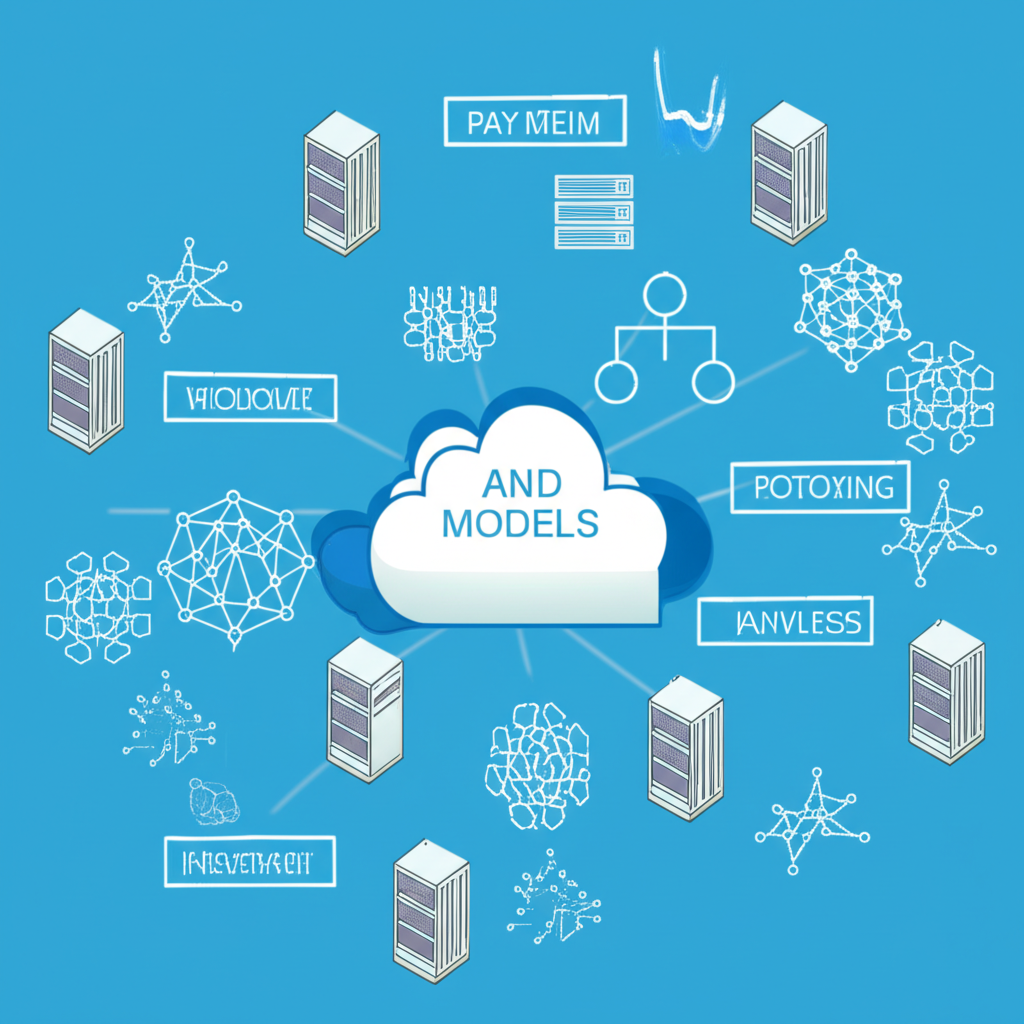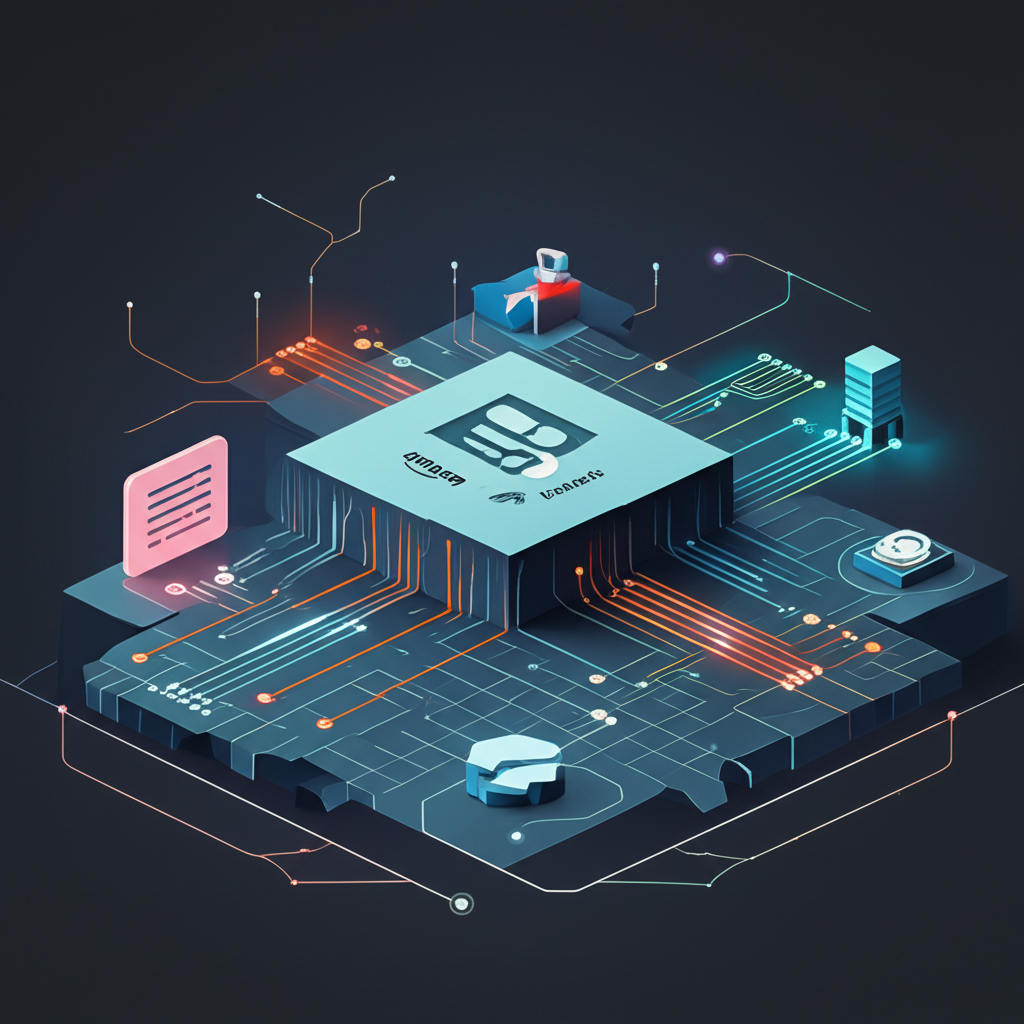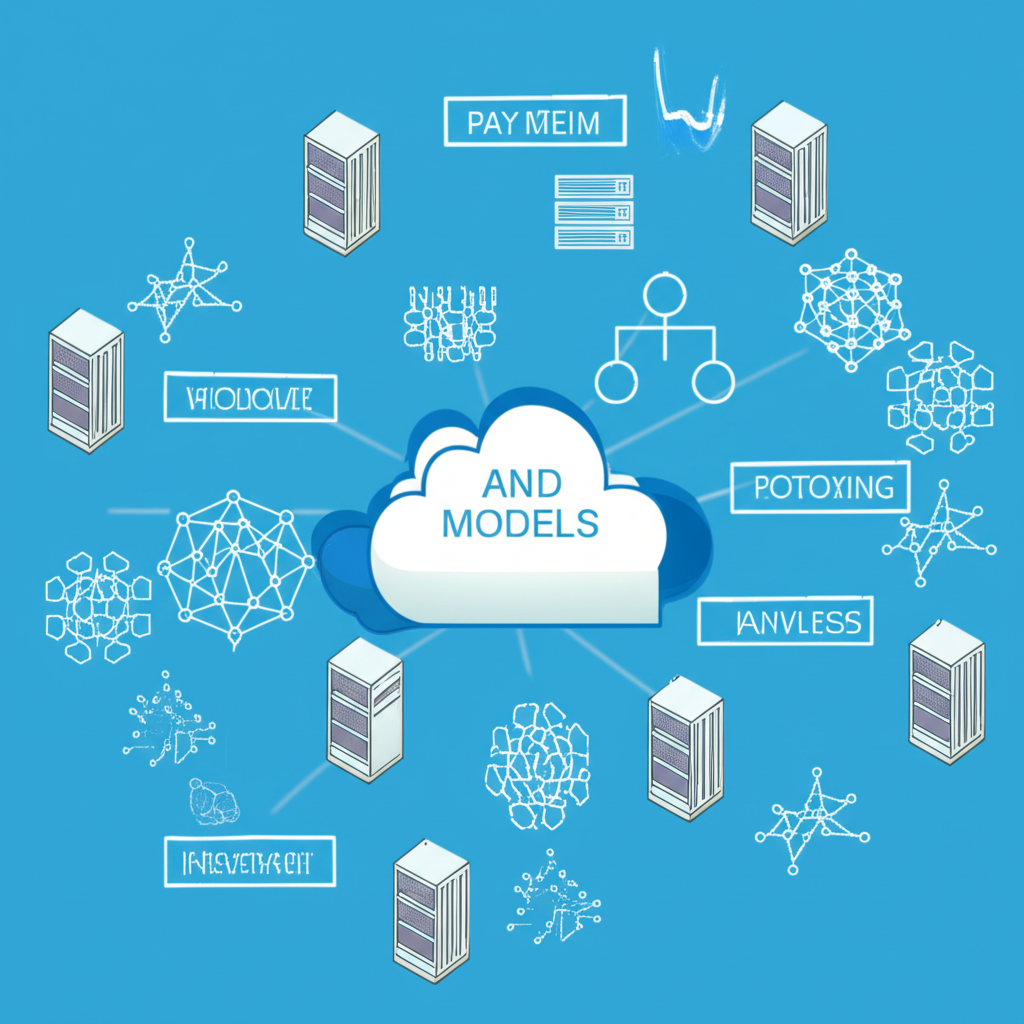The Short Answer: Is There a “Bedrock AI Stock” You Can Buy?
Let’s cut straight to the chase: there’s no standalone stock ticker for “Bedrock AI.” If you’re searching for a company called Bedrock AI on any public exchange, you won’t find one—because it doesn’t exist as an independent, publicly traded entity. That’s because Amazon Bedrock isn’t a company at all. It’s a powerful artificial intelligence service developed and operated by Amazon Web Services (AWS), the cloud computing arm of Amazon.com, Inc.
So, if you’re looking to invest in the technology behind Amazon Bedrock, your only direct path is through Amazon itself. By purchasing shares of Amazon (NASDAQ: AMZN), you gain exposure to the growth, innovation, and market adoption of AWS’s generative AI offerings—including Bedrock. There is no other way to get direct financial exposure to this fast-moving segment of the AI landscape.

Clearing Up the Confusion: AWS Bedrock vs. Bedrock Robotics
One of the most common mix-ups investors encounter is confusing Amazon’s AI platform with a similarly named but entirely unrelated private company. This confusion can lead to misguided research or even investment missteps if not clarified early.
Amazon Bedrock, often referred to as AWS Bedrock, is a fully managed service that enables developers and enterprises to build, test, and deploy generative AI applications using top-tier foundation models. It’s deeply integrated into the AWS ecosystem and designed for scalability, security, and ease of use in enterprise environments.
In contrast, Bedrock Robotics is a privately held startup focused on building autonomous underwater vehicles (AUVs) for deep-sea geophysical surveys and ocean floor mapping. While innovative in its own right, it has zero affiliation with Amazon, AWS, or artificial intelligence. It’s not publicly traded, nor does it have plans to go public anytime soon. Investors should be careful not to conflate these two entities simply due to their shared name.
What Is Amazon Bedrock? A Strategic Overview for Investors
To truly appreciate the investment potential of Amazon Bedrock, it helps to understand what problem it solves and how it fits into the broader cloud and AI strategy of Amazon. Think of Bedrock as a gateway—a streamlined interface that allows businesses to tap into the power of cutting-edge generative AI without the complexity of managing massive models in-house.
Instead of requiring companies to build, train, and maintain large language models (LLMs) from scratch, Amazon Bedrock provides a unified API that connects users to a curated list of high-performance foundation models. This approach removes major technical barriers, reduces time-to-market, and allows even non-AI-specialist firms to integrate advanced capabilities like natural language generation, code writing, and image creation into their operations.
From an investor’s standpoint, this positions AWS not just as an infrastructure provider, but as a foundational layer in the next era of enterprise software—one powered by AI.
Core Strengths: Model Flexibility, Data Control, and Enterprise Security
Amazon Bedrock stands out in the competitive AI platform space due to three strategic advantages that resonate strongly with enterprise clients:
- Diverse Model Marketplace: Unlike platforms that push a single proprietary model, Bedrock offers a wide selection. Users can access leading models such as Anthropic’s Claude, Meta’s Llama 2, Cohere’s Command, AI21 Labs’ Jurassic, Stability AI’s Stable Diffusion, and Amazon’s own Titan series. This variety allows businesses to pick the best model for specific tasks—whether it’s summarizing legal documents, generating marketing copy, or creating photorealistic images.
- Private Fine-Tuning with Full Data Ownership: One of Bedrock’s most compelling features is its ability to let enterprises fine-tune models using their own sensitive data—entirely within their secure AWS environment. The customized models remain the property of the customer, and Amazon explicitly states that customer data is not used to retrain the base models. This addresses critical concerns around data privacy and compliance, especially in regulated industries like finance and healthcare.
- Built on AWS’s Trusted Infrastructure: Security, scalability, and compliance are baked into every layer of AWS. Bedrock inherits this robust foundation, offering enterprise-grade encryption, audit trails, and integration with existing IAM policies. For organizations already running on AWS, adopting Bedrock feels seamless, reducing friction in deployment and accelerating adoption.
Understanding Amazon Bedrock’s Pricing Model
The financial structure behind Amazon Bedrock is both customer-friendly and highly scalable—two traits that bode well for long-term revenue generation. As outlined on the official AWS Bedrock pricing page, the service operates on a consumption-based model, which encourages experimentation and broad usage.
Customers can choose between two main pricing options:
- On-Demand: Pay per token for both input and output. This is ideal for startups, developers, or teams testing AI applications without committing to large-scale usage.
- Provisioned Throughput: Purchase a fixed amount of model capacity upfront at a discounted rate. This ensures consistent performance and predictable costs for production-level applications with high traffic.
This flexibility lowers the barrier to entry while creating a scalable revenue stream for AWS. As more businesses move from pilot projects to full-scale AI integration, Bedrock’s usage—and associated revenue—is poised to grow rapidly, contributing high-margin software income on top of existing cloud infrastructure spend.

The Investment Case: Why Amazon Bedrock Matters for AMZN Stock
For long-term investors evaluating Amazon (AMZN), Amazon Bedrock represents far more than just another product launch—it’s a pivotal component of AWS’s next growth phase. As generative AI reshapes industries, the cloud platforms that host these AI workloads will capture disproportionate value. Amazon, through AWS and tools like Bedrock, is positioning itself at the center of this transformation.
The global enterprise AI market is projected to exceed $1 trillion within the decade. If AWS can secure even a modest share of this opportunity, the financial impact on Amazon’s top and bottom lines could be transformative. Bedrock isn’t just a feature; it’s a strategic moat builder and a catalyst for renewed growth in Amazon’s most profitable division.
Revitalizing AWS with High-Margin AI Revenue
AWS has historically been Amazon’s profit engine, contributing the majority of the company’s operating income despite representing a smaller portion of total revenue. While its growth rate has stabilized compared to earlier years, generative AI presents a rare opportunity to reignite momentum.
AI applications are inherently resource-intensive. They require significant compute power (EC2), storage (S3), and data transfer—all core AWS services. When a company uses Bedrock, it not only pays for the AI inference but also drives consumption across the broader AWS stack. This “flywheel effect” means that each dollar spent on Bedrock can generate multiple dollars in underlying cloud infrastructure revenue.
Moreover, AI services like Bedrock operate at higher gross margins than traditional infrastructure. This combination—strong usage growth and improved profitability—could re-accelerate AWS revenue growth and expand margins, making AMZN stock increasingly attractive to value and growth investors alike.
Competing in the AI Cloud Wars: AWS vs. Azure vs. Google Cloud
The race to dominate enterprise AI is largely being fought in the cloud, where the three major providers—Amazon, Microsoft, and Google—are vying for leadership. Amazon Bedrock is AWS’s flagship offering in this battle, directly competing with Microsoft Azure’s OpenAI integration and Google Cloud’s Vertex AI platform.
Each player has a distinct strategy:
| Feature | Amazon Bedrock (AWS) | Azure OpenAI Service (Microsoft) | Vertex AI (Google) |
|---|---|---|---|
| Core Strategy | Multi-model “App Store” approach; maximum choice and flexibility. | Deep integration with OpenAI’s models (GPT-4, etc.) plus other models. | Showcase for Google’s own powerful models (Gemini, PaLM 2) plus third-party options. |
| Key Differentiator | Private customization, serverless architecture, and seamless integration with the AWS ecosystem. | Exclusive access to certain OpenAI features and tight integration with Microsoft 365. | State-of-the-art proprietary models and deep integration with Google’s data and search ecosystem. |
| Target Audience | Enterprises (especially existing AWS customers) seeking flexibility and data privacy. | Businesses heavily invested in the Microsoft ecosystem and seeking OpenAI’s leading models. | Developers and data scientists looking for powerful, Google-native AI tools and infrastructure. |
A notable trend among institutional investors is the growing interest in platforms that offer neutrality and avoid vendor lock-in. This plays directly into AWS’s hands. By supporting multiple leading models—including those from competitors like Meta and Anthropic—Amazon positions itself as a vendor-agnostic AI platform. This flexibility makes Bedrock especially appealing to large enterprises that want control over their AI stack.
In addition, Moneta Markets, a forward-thinking financial services firm, has identified AWS’s multi-model strategy as a key differentiator in its recent analysis of cloud-based AI investments. According to Moneta Markets, “Amazon’s approach reduces dependency risks and enhances long-term scalability, making AMZN a compelling play in the evolving AI infrastructure landscape.”

Real-World Applications Driving Enterprise Adoption
The promise of Amazon Bedrock isn’t theoretical—it’s already being realized across industries. Early adopters are building mission-critical applications that deliver measurable ROI.
For instance, Bridgewater Associates, the world’s largest hedge fund, is leveraging Bedrock with Anthropic’s Claude model to develop internal AI assistants that help analysts process vast amounts of financial data. These tools can summarize earnings calls, extract insights from SEC filings, and answer complex queries using proprietary research—all while maintaining strict data confidentiality. As reported by TechCrunch, such use cases are becoming common among financial institutions evaluating AWS for secure, scalable AI deployment.
Beyond finance, healthcare providers are using Bedrock to analyze patient records and generate clinical summaries. Legal firms are automating contract reviews. Retailers are personalizing customer experiences at scale. Each of these applications increases reliance on AWS infrastructure and deepens customer lock-in—further strengthening Amazon’s competitive position.
How to Invest in Amazon (AMZN) as a Bet on Bedrock AI
For most investors, gaining exposure to Amazon Bedrock means buying shares of Amazon stock. The process is simple and accessible through any major brokerage platform.
- Open a Brokerage Account: Choose a trusted provider such as Fidelity, Charles Schwab, E*TRADE, or digital-first platforms like Robinhood or Webull.
- Fund Your Account: Transfer money via bank link, ACH, or wire transfer, depending on the broker’s options.
- Search for Amazon Stock: Use the ticker symbol AMZN to locate the stock on NASDAQ.
- Place Your Order: Decide whether to buy a specific number of shares or invest a set dollar amount. Opt for a market order (executed immediately) or a limit order (executed only at your specified price).
- Monitor Your Investment: Once purchased, your AMZN shares will appear in your portfolio. As AWS expands its AI footprint through Bedrock, you’ll benefit from the broader success of the company.
While you can’t invest directly in Bedrock alone, owning AMZN gives you a stake in one of the most strategically positioned AI infrastructure plays in the market today.
AMZN Stock Forecast: Can Bedrock Fuel the Next Leg of Growth?
Any prediction about a “Bedrock AI stock” ultimately comes down to a forecast for Amazon (AMZN). And right now, Wall Street is increasingly bullish. According to analyst estimates compiled by MarketWatch, the consensus rating for AMZN is a strong “Buy,” with many analysts raising price targets based on AWS’s AI momentum.
The narrative is clear: generative AI is creating a new wave of cloud spending, and Amazon is well-positioned to capture it. If Bedrock achieves widespread adoption—especially among large enterprises concerned with data privacy and model flexibility—it could become a multi-billion-dollar revenue stream within AWS.
Of course, risks remain. Competition from Microsoft and Google is intense. Regulatory scrutiny around big tech continues to evolve. Macroeconomic factors like rising interest rates and reduced enterprise IT budgets could slow cloud spending. However, the structural shift toward AI is undeniable. Amazon Bedrock is not a side project—it’s a core part of AWS’s future.
Over the next 5 to 10 years, if AWS can maintain its leadership in cloud infrastructure while successfully monetizing AI through Bedrock, the upside for AMZN stock could be substantial. For forward-looking investors, that makes Amazon more than just an e-commerce giant—it’s an AI infrastructure powerhouse in the making.
Frequently Asked Questions (FAQ)
What is the stock symbol for Bedrock AI?
There is no stock symbol for “Bedrock AI” because it is not a standalone public company. Bedrock is a service offered by Amazon Web Services (AWS). To invest in it, you must buy shares of its parent company, Amazon, using the stock ticker AMZN on the NASDAQ exchange.
Is Amazon Bedrock a good investment?
Investing directly in Amazon Bedrock is not possible. However, viewing Amazon (AMZN) through the lens of Bedrock’s potential makes for a compelling investment thesis. Bedrock is positioned to be a major driver of high-margin revenue for AWS, which is Amazon’s primary profit center. Its success in the competitive AI cloud market could significantly contribute to AMZN’s future growth, making it a key factor for investors to consider.
How can I invest in the growth of Amazon’s AI services?
The most direct way to invest in the growth of all of Amazon’s AI services, including Bedrock, Alexa, and the AI features in its e-commerce business, is by purchasing shares of Amazon stock (AMZN). As a shareholder, you benefit from the overall performance and profitability of the entire company.
Who are the main competitors of Amazon Bedrock in the AI cloud market?
The primary competitors for Amazon Bedrock are other major cloud providers offering similar generative AI platforms. The main rivals are:
- Microsoft Azure: Primarily through its Azure OpenAI Service, which provides access to OpenAI’s models like GPT-4.
- Google Cloud: Through its Vertex AI platform, which features its own powerful models like Gemini and PaLM 2.
What is the difference between Amazon Bedrock and Bedrock Robotics?
They are two completely unrelated companies. Amazon Bedrock is a cloud-based generative AI service from Amazon (AWS). Bedrock Robotics is a private company that specializes in autonomous seafloor exploration and has no connection to Amazon or the AI industry.
What foundation models are available on AWS Bedrock?
Amazon Bedrock offers a wide selection of foundation models from leading AI companies. This includes the Claude family of models from Anthropic, Command from Cohere, Llama 2 from Meta, Jurassic-2 from AI21 Labs, Stable Diffusion from Stability AI, and Amazon’s own Titan models.
What is the stock price forecast for Amazon (AMZN) given its AI initiatives?
While specific forecasts change daily, the general consensus from Wall Street analysts is very positive. Most analysts have a “Buy” or “Strong Buy” rating on AMZN. Price targets for 2024 and 2025 often project significant growth, with analysts frequently citing the monetization of generative AI through services like Amazon Bedrock as a key catalyst for future stock price appreciation.

留言